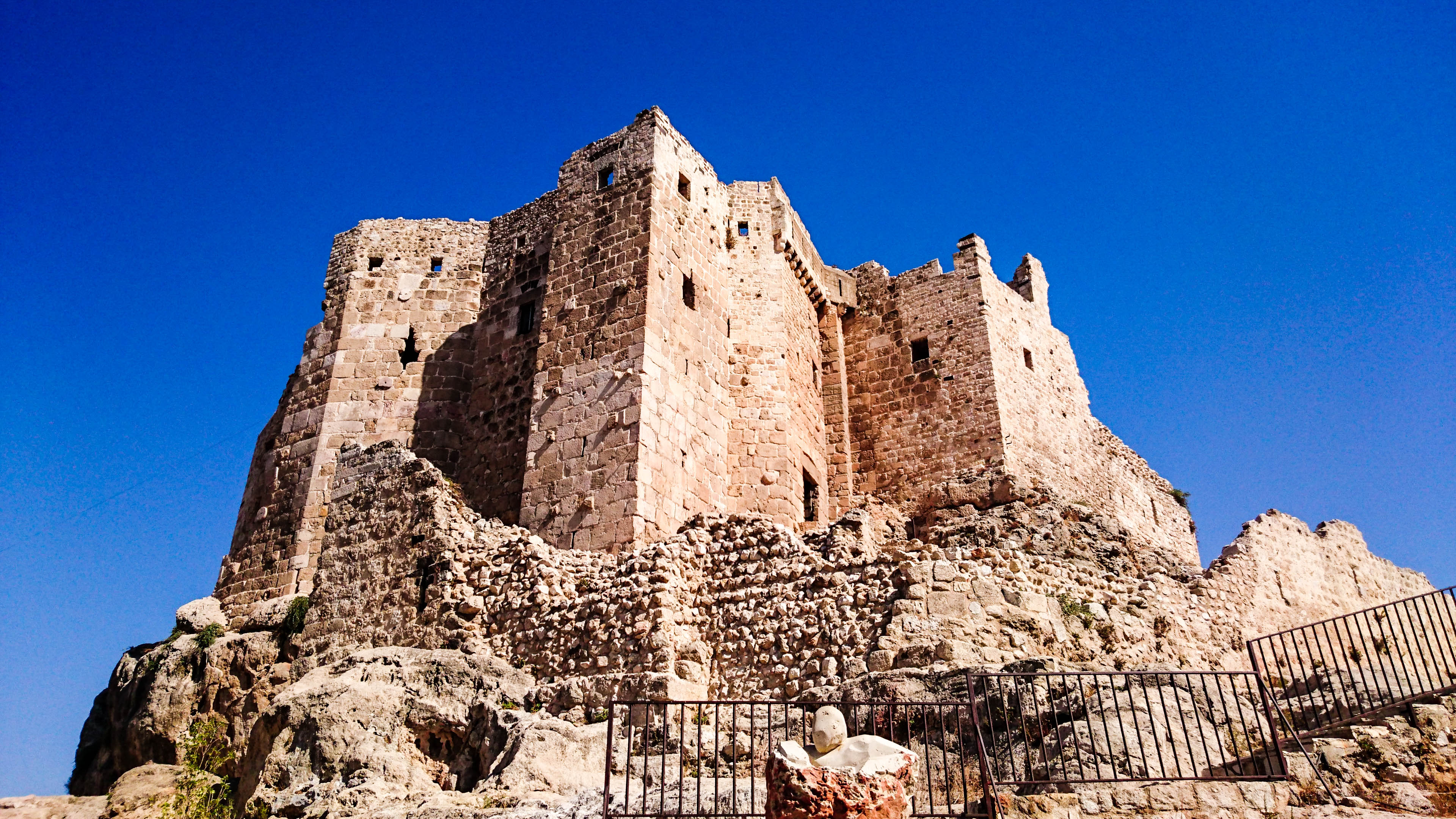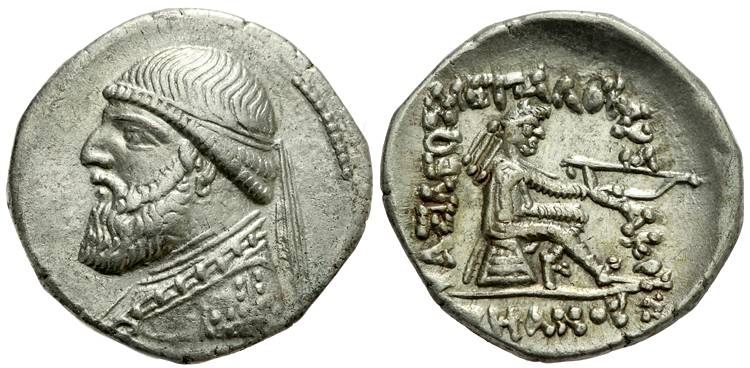|
Al-Muqtafī
Abu Abdallah Muhammad ibn Ahmad al-Mustazhir (; 9 April 1096 – 12 March 1160), better known by his regnal name al-Muqtafi li-Amr Allah (), was the Abbasid caliph in Baghdad from 1136 to 1160, succeeding his nephew al-Rashid, who had been forced to abdicate by the Seljuks. The continued disunion and contests between Seljuk Turks afforded al-Muqtafi opportunity of not only maintaining his authority in Baghdad, but also extending it throughout Iraq. Birth and background The future caliph al-Muqtafi was born on 9 April 1096 as Abu Abdallah Muhammad, the son of the Abbasid caliph al-Mustazhir (). His mother was Ashin, a slave girl from Syria. After his father's death his half-brother al-Mustarshid succeeded him on 6 August 1118. Al-Mustarshid (r. 1118–1135) ruled for sixteen years as Caliph but the last three years of his reign were occupied with war against Seljuq sultan Mas'ud (his deputy). Not long after the siege of Damascus, al-Mustarshid launched a military campaign ... [...More Info...] [...Related Items...] OR: [Wikipedia] [Google] [Baidu] |
List Of Abbasid Caliphs
The Abbasid caliphs were the holders of the Islamic title of caliph who were members of the Abbasid dynasty, a branch of the Quraysh tribe descended from the uncle of the Islamic prophet Muhammad, Al-Abbas ibn Abd al-Muttalib. The family came to power in the Abbasid Revolution in 748–750, supplanting the Umayyad Caliphate. They were the rulers of the Abbasid Caliphate, as well as the generally recognized ecumenical heads of Islam, until the 10th century, when the Shi'a Fatimid Caliphate (established in 909) and the Caliphate of Córdoba (established in 929) challenged their primacy. The political decline of the Abbasids had begun earlier, during the Anarchy at Samarra (861–870), which accelerated the fragmentation of the Muslim world into autonomous dynasties. The caliphs lost their temporal power in 936–946, first to a series of military strongmen and then to the Shi'a Buyid dynasty, Buyid Amir al-umara, Emirs that seized control of Baghdad; the Buyids were in turn replac ... [...More Info...] [...Related Items...] OR: [Wikipedia] [Google] [Baidu] |
Gold Dinar
The gold dinar () is an Islamic medieval gold coin first issued in AH 77 (696–697 CE) by Caliph Abd al-Malik ibn Marwan. The weight of the dinar is 1 mithqal (). The word ''dinar'' comes from the Latin word denarius, which was a silver coin. The name "dinar" is also used for Sasanid, Kushan, and Kidarite gold coins, though it is not known what the contemporary name was. The first dinars were issued by the Umayyad Caliphate. Under the dynasties that followed the use of the dinar spread from Islamic Spain to Central Asia. Background Although there was a dictum that the Byzantine solidus was not to be used outside of the Byzantine empire, some of these coins became involved in distant trade; those then did not get re-minted by the imperial mints, and quickly became worn. Towards the end of the 7th century CE, Arabic copies of solidi – dinars issued by the caliph Abd al-Malik (685–705 CE), who had access to supplies of gold from the upper Nile – ... [...More Info...] [...Related Items...] OR: [Wikipedia] [Google] [Baidu] |
Seljuk Turks
The Seljuk dynasty, or Seljukids ( ; , ''Saljuqian'',) alternatively spelled as Saljuqids or Seljuk Turks, was an Oghuz Turks, Oghuz Turkic, Sunni Muslim dynasty that gradually became Persianate society, Persianate and contributed to Turco-Persian tradition, Turco-Persian culture. The founder of the Seljuk dynasty, Seljuk Beg, was a descendant of a royal Khazar chief Tuqaq who served as advisor to the King of the Khazars. in West Asia and Central Asia. The Seljuks established the Seljuk Empire (1037–1194), the Kerman Seljuk Sultanate, Sultanate of Kermân (1041–1186) and the Sultanate of Rum (1074–1308), which stretched from Iran to Anatolia and were the prime targets of the First Crusade. Early history The Seljuks originated from the Kınık (tribe), Kinik branch of the Oghuz Turks, who in the 8th century lived on the periphery of the Muslim world; north of the Caspian Sea and Aral Sea in their Oghuz Yabgu State in the Kazakh Steppe of Turkestan. During the 10th century, ... [...More Info...] [...Related Items...] OR: [Wikipedia] [Google] [Baidu] |
Isfahan (city)
Isfahan or Esfahan ( ) is a city in the Central District of Isfahan County, Isfahan province, Iran. It is the capital of the province, the county, and the district. It is located south of Tehran. The city has a population of approximately 2,220,000, making it the third-most populous city in Iran, after Tehran and Mashhad, and the second-largest metropolitan area. Isfahan is located at the intersection of the two principal routes that traverse Iran, north–south and east–west. Isfahan flourished between the 9th and 18th centuries. Under the Safavid Empire, Isfahan became the capital of Iran, for the second time in its history, under Abbas the Great. It is known for its Persian–Muslim architecture, grand boulevards, covered bridges, palaces, tiled mosques, and minarets. Isfahan also has many historical buildings, monuments, paintings, and artifacts. The fame of Isfahan led to the Persian proverb ''Esfahān nesf-e-jahān ast'' (Isfahan is half (of) the world). Naqsh-e J ... [...More Info...] [...Related Items...] OR: [Wikipedia] [Google] [Baidu] |
Imad Al-Din Zengi
Imad al-Din Zengi (; – 14 September 1146), also romanized as Zangi, Zengui, Zenki, and Zanki, was a Turkoman atabeg of the Seljuk Empire, who ruled Mosul, Aleppo, Hama, and, later, Edessa. He was the namesake and founder of the Zengid dynasty of atabegs. Early life Zengi's father, Aq Sunqur al-Hajib, governor of Aleppo under Malik-Shah I, was beheaded by Tutush I for treason in 1094. At the time, Zengi was about 10 years old and was brought up by Kerbogha, the governor of Mosul. Zengi then served in the military of the Governors of Mosul, first under Jawali Saqawa (1106–1109), then Mawdud (1109–1113), and from 1114, under Aqsunqur al-Bursuqi. Zengi remained in Mosul until 1118, when he entered into the service of the new Seljuk ruler Mahmūd (1118–1119). Upon Sanjar's accession in 1119, Zengi remained loyal to Mahmūd, who became ruler of the Iraqi Seljuk Sultānate (1119–1131). Seljuk Governor of Iraq The region of Mesopotamia was under the control of the S ... [...More Info...] [...Related Items...] OR: [Wikipedia] [Google] [Baidu] |
Ghiyath Ad-Din Mas'ud
Ghiyath al-Dunya wa'l-Din Abu'l-Fath Mas'ud bin Muhammad ( 1107 – 10 October 1152) was the Seljuq Sultan of Iraq and western Persia in 1133–1152. Reign Ghiyath ad-Din Masud was the son of sultan Muhammad I Tapar and his wife Nistandar Jahan also known as Sarjahan Khatun. At the age of twelve (1120–1121), he rebelled unsuccessfully against his elder brother, Mahmud II, who however forgave him. At Mahmud's death in 1131, the power was contended between Mahmud's son, Dawud, Masud, whose powerbase was in Iraq , Seljuq-Shah (in Fars and Khuzistan) and Toghrul II. In 1133 Masud was able to obtain recognition as sultan from the emirs of Baghdad, and to receive the investiture by caliph al-Mustarshid. Toghrul, who controlling the eastern provinces of the western Seljuq, launched a military campaign but was defeated by Masud in May 1133. Toghrul died in 1134. Also in 1133 Mas'ud supported Zengi, besieged by al-Mustarshid's troops in Mosul. In 1135 caliph al-Mustarshid contested ... [...More Info...] [...Related Items...] OR: [Wikipedia] [Google] [Baidu] |
Seljuq Turks
The Seljuk dynasty, or Seljukids ( ; , ''Saljuqian'',) alternatively spelled as Saljuqids or Seljuk Turks, was an Oghuz Turkic, Sunni Muslim dynasty that gradually became Persianate and contributed to Turco-Persian culture. The founder of the Seljuk dynasty, Seljuk Beg, was a descendant of a royal Khazar chief Tuqaq who served as advisor to the King of the Khazars. in West Asia and Central Asia. The Seljuks established the Seljuk Empire (1037–1194), the Sultanate of Kermân (1041–1186) and the Sultanate of Rum (1074–1308), which stretched from Iran to Anatolia and were the prime targets of the First Crusade. Early history The Seljuks originated from the Kinik branch of the Oghuz Turks, who in the 8th century lived on the periphery of the Muslim world; north of the Caspian Sea and Aral Sea in their Oghuz Yabgu State in the Kazakh Steppe of Turkestan. During the 10th century, Oghuz had come into close contact with Muslim cities. When Seljuk, the leader of the S ... [...More Info...] [...Related Items...] OR: [Wikipedia] [Google] [Baidu] |
Abu-al-Faraj Ibn Al-Jawzi
Abu al-Faraj Jamal al-Din Abd al-Rahman ibn Abi Hasan Ali Al-Jawzi also known as Ibn al-Jawzi (16 June 1201) was a Muslim jurisconsult, preacher, orator, heresiographer, traditionist, historian, judge, hagiographer, and philologist who played an instrumental role in propagating the Hanbali school of orthodox Sunni jurisprudence in his native Baghdad during the twelfth-century. During "a life of great intellectual, religious and political activity," Ibn al-Jawzi came to be widely admired by his fellow Hanbalis for the tireless role he played in ensuring that that particular school – historically, the smallest of the four principal Sunni schools of law – enjoy the same level of "prestige" often bestowed by rulers on the Maliki, Shafi'i, and Hanafi rites. Ibn al-Jawzi received a "very thorough education" during his adolescent years, and was fortunate to train under some of that era's most renowned Baghdadi scholars, including Ibn al-Zāg̲h̲ūnī (d. 1133), Abū Bakr al-D ... [...More Info...] [...Related Items...] OR: [Wikipedia] [Google] [Baidu] |
Order Of Assassins
The Order of Assassins (; ) were a Nizari Isma'ilism, Nizari Isma'ili order that existed between 1090 and 1275 AD, founded by Hasan-i Sabbah, Hasan al-Sabbah. During that time, they lived in the mountains of Persia and the Levant, and held a strict subterfuge policy throughout the Middle East, posing a substantial strategic threat to Fatimid Caliphate, Fatimid, Abbasid, and Seljuk Empire, Seljuk authority, and killing several Christian leaders. Over the course of nearly 200 years, they killed hundreds who were considered enemies of the Nizari Isma'ili state. The modern term assassination is believed to stem from the tactics used by the Assassins. Contemporaneous historians include ibn al-Qalanisi, Ali ibn al-Athir, and Ata-Malik Juvayni. The former two referred to the Assassins as ''batiniyya'', an epithet widely accepted by Isma'ilis themselves. Overview The Assassins were founded by Hassan-i Sabbah. The state was formed in 1090 after the capture of Alamut Castle in the Albo ... [...More Info...] [...Related Items...] OR: [Wikipedia] [Google] [Baidu] |
Hamadan
Hamadan ( ; , ) is a mountainous city in western Iran. It is located in the Central District of Hamadan County in Hamadan province, serving as the capital of the province, county, and district. As of the 2016 Iranian census, it had a population of 554,406 people in 174,731 households. Hamadan is believed to be among the oldest Iranian cities. It was referred to in classical sources as Ecbatana ( Old Persian ). It is possible that it was occupied by the Assyrians in 1100BCE; the Ancient Greek historian, Herodotus, states that it was the capital of the Medes, around 700BCE. Hamadan is situated in a green mountainous area in the foothills of the 3,574-meter Alvand Mountain, in midwestern Iran. The city is 1,850meters above sea level. It is located approximately southwest of Tehran. The old city and its historic sites attract tourists during the summer. The major sights of this city are the Ganj Nameh inscription, the Avicenna monument and the Baba Taher monument. The m ... [...More Info...] [...Related Items...] OR: [Wikipedia] [Google] [Baidu] |





